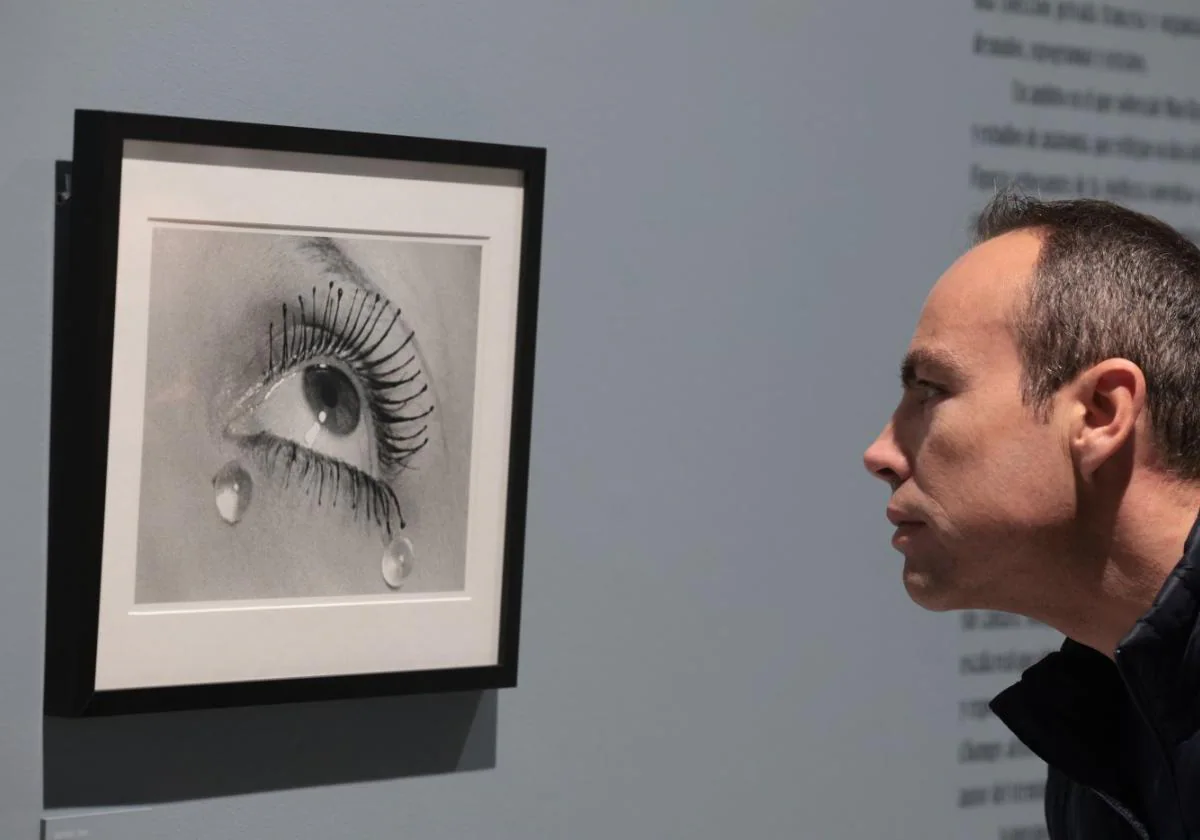World famous tears, Coco Chanel and a portrait that made Picasso fall in love: Man Ray's icons in Malaga
The universe of this pioneering visual artist is now at the Carmen Thyssen museum: 60 images show great names of the avant-garde
Regina Sotorrío
Malaga
Friday, 2 February 2024, 16:58
Unclassifiable, mysterious, elusive. Those are the words used by experts to define an artist whose life and work they have been studying for years. They say around 35,000 works - "nobody knows exactly" - have his signature on them. Malaga's Carmen Thyssen museum is now exhibiting a tiny part of that production, some 60 pieces, albeit a "select" sample that are representative of the universe of Man Ray.
All his icons can now be found in the museum's Sala Noble: his illustrious friends, his passion for women, his contribution to fashion and that avant-garde spirit that earned him a place among the Dadaists and Surrealists of the early 20th century.
Man Ray. Fotografías Selectas, an exhibition curated by Pierre-Yves Butzbach and Robert Rocca with works from a French private collection, starts with the most famous images by the American artist resident in Paris.
On one side is Le Violon d'Ingres, the most expensive photograph ever which was sold for 12.4 million dollars two years ago; Kiki de Montparnasse poses with two f-holes painted on her naked back to resemble a violin. On the other side is Noire et Blanche, published in Vogue, showing the model and singer's face alongside a black African ritual mask. Kiki de Montparnasse, his muse and lover for years, is one of the starring women in this show, along with Lee Miller, another of the great loves of his life. It is in fact Miller's tearful eye that appears in Tears, an image that originally promoted a make of mascara and that he later raised to the category of art. A constant in his creation.
The exhibition
-
Content Some sixty photographs from a private French collection.
-
Date Untill 21 April. From Tuesday to Sunday, from 10am to 8pm.
-
Entry tickets General: 11 euros (valid to visit the whole museum). Reductions for certain categories: 6 euros.
However, it was the portraits of his friends that first made him a living and then brought him fame. Born in Philadelphia to Jewish parents of Russian origin, Man Ray arrived in Paris in 1921 after a period in New York. His first exhibition of paintings was well received by critics, but he sold nothing. His friend Francis Picabia then encouraged him to earn a living taking photographs of other artists and their work. He was an immediate success.
The list of names in his gallery - and now in the Thyssen - is overwhelming: André Breton, Marcel Duchamp, Salvador Dalí, Luis Buñuel, Alberto Giacometti, Juan Gris, Joan Miró, George Braque, Pablo Picasso... The most iconic portrait of Coco Chanel is Man Ray's, an image that is a symbol of women's liberation as she stands, hands in pockets and a cigarette in her mouth. Man Ray himself said in his biography that Picasso fell in love with Dora Maar when he saw her photograph in his studio. The Malaga painter was so taken that, according to the curators, he exchanged one of this bullfighting works for the photograph and persuaded Paul Éluard to introduce them.
Among the surreal pieces is the portrait of Marquise Casati, which came out blurred by mistake. "You've taken a picture of my soul," she told him when she saw it.
Space for the model
The curators explain that the key lies in the distance. While all the photos are close-ups, the artist would actually take a full body photograph of the model from the end of the studio. Getting close, he said, deformed the features. In this way he gave space to the model and, when blown up, the grain of the photo hid imperfections. He also introduces another photographic technique thanks to Lee Miller: solarisation, a developing process discovered by accident that inverts the tones and creates a dark outline around contrasting shapes.
He takes his experimental vein one step further in his so-called "rayographs", photographs taken without a camera, by placing objects on photosensitised paper and exposing them to light for several seconds. Eight are currently on display in Malaga and are a reflection of his most artistic - not to mention Dadaist - facet. In fact, the original term "rayographie" was coined by Dada poet Tristan Tzara to define these strange photographs using the name of Man Ray.

The final section of the exhibition is reserved for nude - mainly female - images. Man Ray had a weakness for women - something that, along with chess, brought him closer to Marcel Duchamp - and the different women in his life left their mark on his creativity. The photographs are explicit, but elegant, with great visual strength, and resemble classic works of art. Among them is Observatory Time - The Lovers, with Lee Miller lying on a sofa under an immense pair of lips painted by Man Ray for a poster. Some time later he recognised that the mouth was a gesture towards Kiki de Montparnasse. Each image, Man Ray would say, hid a story. And if it didn't have one "he invented one" say the curators, paraphrasing the artist himself.

This exhibition shows only a little of his link with the world of fashion, but his influence was essential there too: Man Ray "revolutionised" fashion photography with powerful portraits of models which moved away from the typical snaps of mannequins and designer sketches.
"But Man Ray is much more than that. There are his drawings, his paintings, his objects..." Unclassifiable, mysterious and elusive. The exhibition, in collaboration with Estepona town hall, can be viewed at the Malaga Thyssen museum until 21 April.
